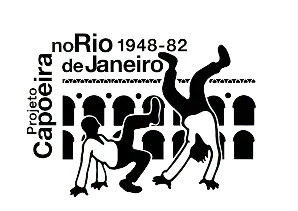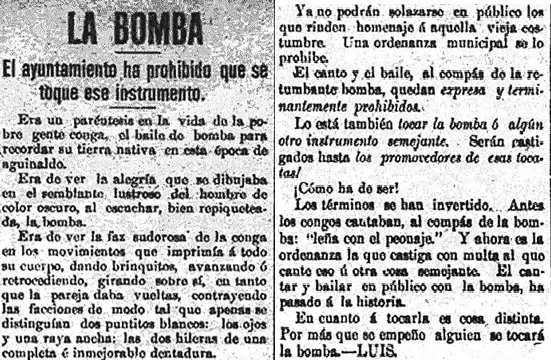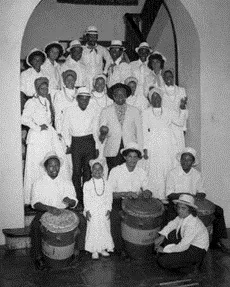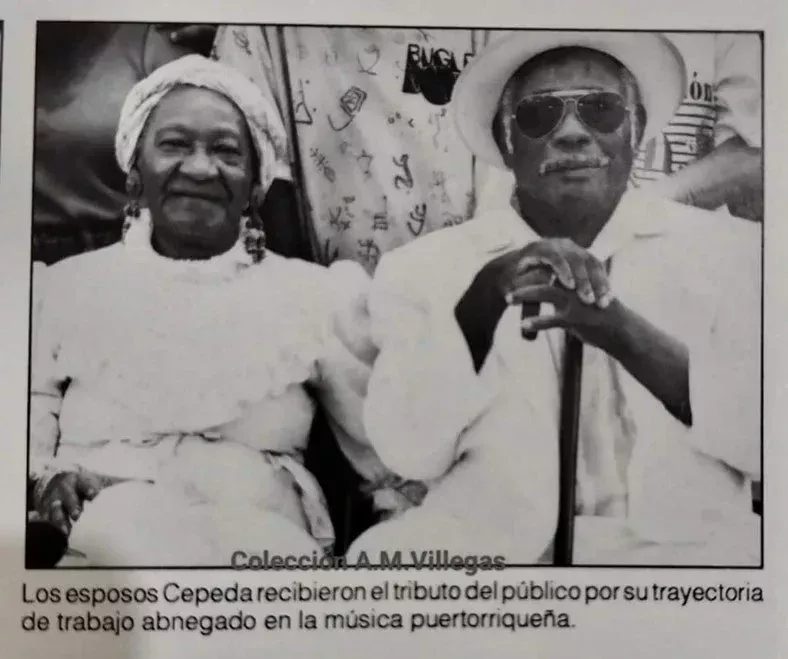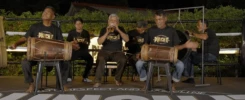History of kokobalé, the Afro-Puertorican martial art (part II)
By Carlos “Xiorro” Padilla Caraballo
After Abolition: Persecution and prohibition
As we saw in our previous post, Bomba and Kokobalé were manifestations of maroonage in Borikén (Puerto Rico). After the abolition of slavery, Bomba and Kokobalé remained the main instruments of struggle and resistance of the Afro-Boricua and mixed communities. In addition to preserving traditional Afro-Boricua ancestral knowledge, i.e. music, dance, martial (warrior) tradition and oral tradition, it also served to maintain rituals and other Afro-Boricua spiritual practices. Fernández defines Kokobalé as follows:
Cocobalé was a fight accompanied by the rhythm of drums and dance. Its purpose was to demonstrate skill and strength in the contenders, respect for each other and respect for established rules. In Puerto Rico it was practised by men. Each combatant used a stick to defend himself. He had to show resourcefulness and skill in its use. Having the same weapon established equality. There was no advantage to either. The purpose was to exercise, to acquire self-mastery of the body and to improve defensive skills.”
By the 1900s Bomba was persecuted and banned because of racist prejudices, and Kokobalé with it. These prohibitions and persecutions were partly the reason for the weakening and invisibilisation of many of our traditions, and partly the reason for resorting to secrecy.
I include this newspaper cutting as an example of the persecution and banning of Bomba. This news item confirms that the relationship between the Kongos and Bomba was common knowledge. The Bomba song, ‘Firewood with the peonage’ can have several meanings. Firewood refers to the wood used to light a fire but in Boriken ‘to give firewood’ means to give a beating. Also peonage has two meanings. One is the troop of foot soldiers and the other is the salaried labour or the labourers on a construction site. Therefore, it can mean to fire or beat up foot soldiers or some form of wage labourers.
1 Fernández, De Bomba y de Bombeadores, 2021, p. 67.
In this newspaper cutting we can see the racist prejudices of the white population of the island against the Afro-descendant population and their customs. This news item also mentions the municipal ordinance that banned the Bomba and mentions that those who do not comply with this ordinance will be punished.
Many of the racist prejudices that condemned and demonised our traditions continue to this day. These traditions are passed down orally so there is little or no written documentation on many of the aspects that comprise them. Especially when we understand that the Europeans, who placed emphasis on writing in their cultures, forbade the enslaved to learn to read and write.
I would say that Kokobalé experienced a second persecution of a political nature. In Borikén, everything related to resistance, struggle and revolution has been made invisible, minimised or excluded from our history books and classes. From the indigenous rebellions and the rebellions of Africans and their descendants, both being Maronnage, to the independence struggles, all have been criminalised and made invisible. As Pedro Lebrón Ortiz aptly describes:
“…much of the historical documentation generated before the 20th century was the product of the judicial and police apparatuses of colonial control and repression. Acts of resistance were framed in such a way that narratives were oriented towards the preservation of the slave system and white hegemony (Carreras Damas 2006, 39; San Miguel 2004, 57).”2
As Kokobalé was part of Bomba it was banned along with it and excluded from the general history of Borikén. Both traditions were practised in secret by families who had the courage to resist and fight to maintain their traditions.
2 Lebrón Ortiz, 2020. Filosofía del Cimarronaje, p. 50-51.
Folkloric Period and the Cepeda lineage
In 1954 Don Rafael Cepeda and his wife Doña Caridad Brenes created a group called Grupo Trapiche, whose name changed in the 1960s to Rafael Cepeda y sus Bomberos, and in 1970 became Ballet Folklórico Familia Cepeda. This group was dedicated to preserve and present, as part of our Puerto Rican culture, the traditions of Bomba and Plena in different local and international media such as festivals, cultural activities and even on television.
With this effort the Cepeda family confronted the prejudices that existed against Afro-Boricua traditions by presenting the music and dances around Borikén and internationally as important parts of the Borikén culture. Don Rafael envisioned recreating with his Ballet Folklorico popular dances and traditions of San Mateo de Cangrejos, a self-liberated Afro-descendant town and one of these was Kokobalé.
His son Maestro Roberto Cepeda talking about Kokobalé that the Cepeda Family preserved and presented in their folkloric ballet says:
When we used to put on the number with the Cepeda family, we did it starting with a man trying to make another man’s woman fall in love with him. Then the man comes and pushes him and words are exchanged. Then one comes and pulls out the stick and the other pulls out the stick and then the bomba begins, the two start to dance and the two start to perform the dance.”4.
He then explains:
You see, in those times people used the machete to cut the cane, but they used the stick as well, to work. So, to use the machetes, they also used the sticks. Instead of using the machete, in the dances, sometimes they used sticks. To create the scene there were a lot of people, women talking, shouting and all that. And that’s how the choreography was done.”5
This confirms what we read about the regulation of 1826 where, in our opinion, the machete was replaced by the stick. The only family that preserved Kokobalé was the Cepeda family. This is the only historical and verifiable Kokobalero lineage. In fact, Kokobalé can be considered a ‘family secret’ of the Cepeda family.
4 Ensayos Sobre Las “Artes Marciales” Africanas y La Bomba de Puerto Rico, Introdução Editorial, Revista Güiro y Maraca, Vol. 5, No. 1, 2001.
5 Ibid.
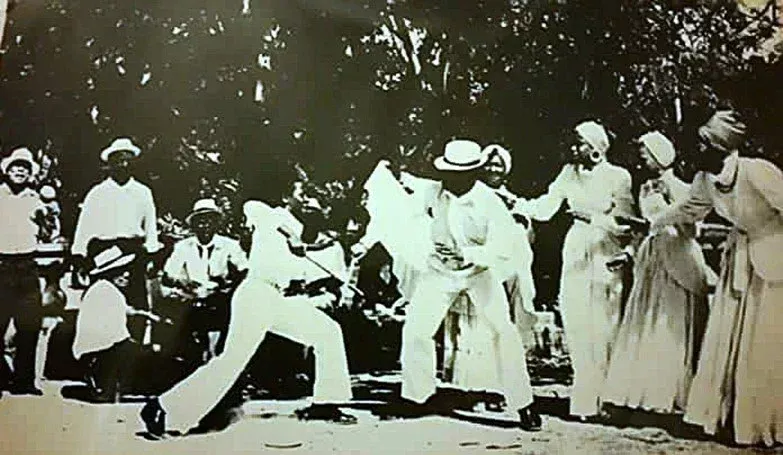
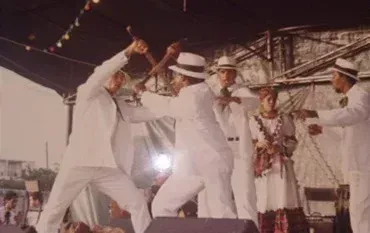
In the images, the Cepeda Family playing kokobalé through the ages. Photos provided by Master José Cepeda.
Kokobalé today
Proyecto Kokobalé is the only organisation in Borikén dedicated exclusively to the rescue, investigation, promotion and development of Kokobalé. We work directly with the Cepeda family through our mentor Maestro José Cepeda, son of Tambor Mayor (Master percussionist) Jesús Cepeda and grandson of Don Rafael Cepeda and Doña Caridad Brenes, in order to bring this tradition back to our people. The author has been practising and learning the Bomba tradition for more than 20 years. As Rafaelito Cepeda said, ‘Without Bomba there is no Kokobalé’. This statement corresponds to a historical reality.
Founded in the study of Bomba from Borikén, we work on Kokobalé with children and adults. At the same time we do serious research into historical records and the oral tradition of the families who were protagonists and links in the chain of transmission of our traditions. In addition, we make comparisons with sister traditions in the Caribbean and Abya Yala (the Americas) in general.
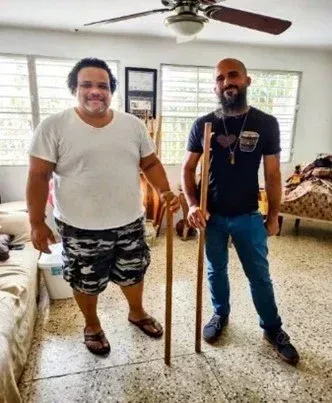
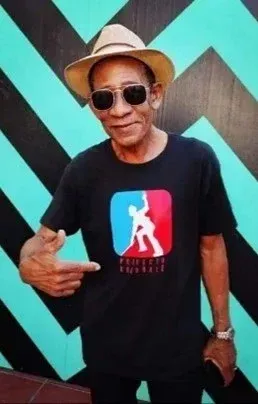
With the blessing of the Cepeda family, and other elders, we work exclusively with the Kokobalé of Borikén and honour with our work the lineage of this family that comes in a chain of transmission from Africa to the maroons, from the maroons to the Bomba practitioners of the past, from the Bomba practitioners of yesteryear to the Cepeda Family and from the Cepeda Family to Proyecto Kokobalé.

References
Cepeda, Rafael. El Patriarca de la Bomba. LP, Porto Rico: Discos Cangrejo.
“Ensayos Sobre Las ‘Artes Marciales’ Africanas y La Bomba de Puerto Rico”. Introdução Editorial. Revista Güiro y Maraca, Vol. 5, No. 1, 2001.
Fernández Morales, José. De Bomba y de Bombeadores. San Juan, Puerto Rico: BiblioGraficas, 2021.
Ortiz, P. Lebrón. Filosofía del Cimarronaje. Cabo Rojo, Puerto Rico: Editora Educación Emergente, 2020.
